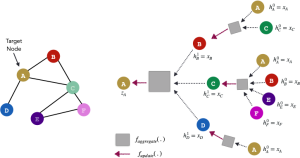Digital transformation has revolutionized the way businesses manage documents. Paper documents pile up on desks, creating bottlenecks in workflows. OCR technology eliminates these problems by converting physical documents into digital formats. Companies save countless hours previously spent on manual data entry. Modern OCR models use artificial intelligence to read complex layouts. They process handwritten notes with surprising accuracy. Business productivity increases when teams can search through digitized documents instantly.
What is OCR Software?

Optical Character Recognition converts printed or handwritten text into machine-readable text. The technology scans document images and identifies individual characters. Advanced OCR engines understand context and automatically correct errors.
Traditional scanning creates image files that computers cannot search. OCR transforms these images into editable text formats. Users can easily copy, paste, and modify the extracted content.
AI-powered OCR systems can recognize a wide range of complex document types. They handle invoices, contracts, and technical documents with precision. Modern solutions process multiple languages simultaneously without special training.
Applications of OCR Software
Healthcare facilities use OCR to digitize patient records and extract ICD-10 codes. Financial institutions process loan applications and compliance documents faster. Legal firms convert case files into searchable digital archives.
Manufacturing companies scan bills of lading and customs documents automatically. Retail businesses digitize receipts and inventory sheets efficiently. Educational institutions convert handwritten assignments into digital formats for grading.
Government agencies process forms and applications using OCR technology. Insurance companies extract data from claim documents quickly. Real estate firms digitize property documents and contracts seamlessly.
Categories of OCR Solutions
OCR solutions fall into distinct categories based on deployment and functionality. Each category serves different business needs and technical requirements.
Web-Based Document Processing Tools
Cloud-based OCR services offer scalability without infrastructure investment. Companies upload documents through web browsers for processing. These tools handle high-volume document processing efficiently.
Google Document AI provides enterprise-grade OCR capabilities through cloud services. Microsoft Azure Document Intelligence processes complex workflows automatically. Amazon Textract extracts data from forms and tables accurately.
Web-based solutions integrate with existing document management systems. They offer real-time processing for urgent business requirements. Teams collaborate on digitized documents from any location.
Open-Source OCR Libraries and Frameworks
Developers customize open-source OCR engines for specific requirements. Tesseract provides free character recognition capabilities with community support. PyOCR offers Python integration for custom applications.
Open-source solutions reduce licensing costs for businesses. Technical teams modify algorithms for specialized document types. Community contributions improve accuracy over time through collaborative development.
These frameworks require technical expertise for implementation. Companies save money but invest time in development. Configuration options allow fine-tuning for specific document formats.
Software for OCR on Desktops
Desktop OCR applications work offline without internet connectivity. They process sensitive documents while maintaining privacy compliance. Users control data processing entirely on local machines.
ABBYY FineReader PDF dominates desktop OCR markets with superior accuracy. Adobe Acrobat Pro DC includes surprisingly effective built-in OCR tools. FreeOCR provides basic functionality for individual users.
Desktop solutions handle large document volumes efficiently. They integrate with existing file management systems. Processing speeds depend on computer hardware specifications.
OCR Apps for Mobile Devices
Mobile OCR apps scan documents using smartphone cameras. Business travelers digitize receipts and contracts on location. Field workers process forms without returning to offices.
CamScanner leads mobile OCR markets with user-friendly interfaces. Microsoft Lens integrates with Office 365 for seamless workflows. Adobe Scan creates high-quality PDFs from mobile captures.
Mobile apps work in challenging conditions with proper lighting. They sync processed documents to cloud storage automatically. Teams access digitized content immediately after scanning.
7 Top OCR Solutions for Businesses
Microsoft Lens
Microsoft Lens transforms smartphones into portable scanning devices. The app accurately captures documents, whiteboards, and business cards. Integration with Microsoft 365 creates seamless document workflows.
Users scan multiple pages into single PDF files. The app recognizes text in over 40 languages automatically. Handwritten notes convert to digital text with remarkable accuracy.
Business teams share scanned documents through Teams and SharePoint. The free app reduces costs for small businesses significantly. Offline processing maintains productivity during travel.
ABBYY FineReader PDF
ABBYY FineReader PDF sets industry standards for desktop OCR accuracy. The software handles complex layouts and stylized fonts expertly. Document comparison features detect changes between versions automatically.
Professional users appreciate advanced editing capabilities after OCR processing. The software creates searchable PDFs with exceptional layout retention. Batch processing handles hundreds of documents efficiently.
Enterprise licensing supports large-scale business scanning tasks. Integration with document management systems streamlines workflows. Regular updates improve recognition accuracy continuously.
ABBYY Mobile OCR Engine
ABBYY Mobile OCR Engine powers custom mobile applications. Developers integrate features into existing business apps seamlessly. The engine processes documents in real-time on mobile devices.
Banks use the technology for check deposits and loan applications. Insurance companies process claims through mobile apps. Healthcare providers digitize patient forms instantly.
The engine supports over 200 languages with high accuracy rates. Custom training improves recognition for specialized document types. Offline processing protects sensitive business information.
Readiris 17
Readiris 17 offers affordable OCR solutions for mid-sized businesses. The software converts various file types into editable formats. Cloud synchronization enables access from multiple devices.
Small businesses appreciate the straightforward interface and reasonable pricing. Document organization features help manage digitized files effectively. Multi-language support serves international business requirements.
The software includes PDF editing tools for post-processing tasks. Batch conversion saves time with large document volumes. Technical support assists with implementation challenges.
CamScanner
CamScanner pioneered mobile document scanning with intelligent enhancement features. The app automatically detects document edges and corrects perspective. Cloud storage keeps scanned documents accessible anywhere.
Business users create professional-quality PDFs from phone cameras. OCR functionality extracts text for editing and sharing. Collaboration features enable team document workflows.
Premium subscriptions remove watermarks and add advanced features. Enterprise plans include administrative controls and security compliance. The app works reliably in various lighting conditions.
FreeOCR
FreeOCR provides basic OCR functionality without licensing costs. Individual users and small businesses benefit from free access. The software handles common document types adequately.
Simple interface requires minimal technical expertise for operation. Batch processing capabilities handle multiple documents simultaneously. Output formats include Word, PDF, and plain text.
Community support helps users resolve technical issues. Regular updates maintain compatibility with modern operating systems. Limited features suit basic document processing requirements.
Nanonets
Nanonets specializes in AI-powered document processing for businesses. The platform handles invoices, receipts, and forms automatically. Custom training adapts the system to specific document types.
Machine learning improves accuracy rates through continuous processing. API integration connects with existing business applications. Real-time processing supports high-volume document workflows.
Enterprise features include workflow automation and data validation. The platform processes unstructured documents with impressive accuracy. Custom models serve industry-specific requirements effectively.
Conclusion
OCR technology continues advancing with artificial intelligence and machine learning. Businesses choosing the right solution improve operational efficiency significantly. Mobile apps democratize document processing for teams everywhere.
Cloud-based solutions offer scalability for growing businesses. Desktop software provides control for sensitive document processing. Open-source options reduce costs while requiring technical expertise.
Success depends on matching OCR capabilities with specific business requirements. Companies should evaluate accuracy rates, supported languages, and integration options. The investment in quality OCR solutions pays returns through improved productivity.
Also Read: How Machine Learning is Improving Care in Hospitals
FAQs
Modern OCR models use AI to understand context, handle complex layouts, and process multiple languages with near-perfect accuracy rates.
Yes, advanced OCR solutions process handwritten text effectively, though printed documents still achieve higher accuracy rates consistently.
Microsoft Lens and FreeOCR offer cost-effective solutions, while CamScanner provides mobile convenience for growing businesses.
Desktop software and mobile apps often work offline, while cloud-based solutions require internet for document processing and storage.



